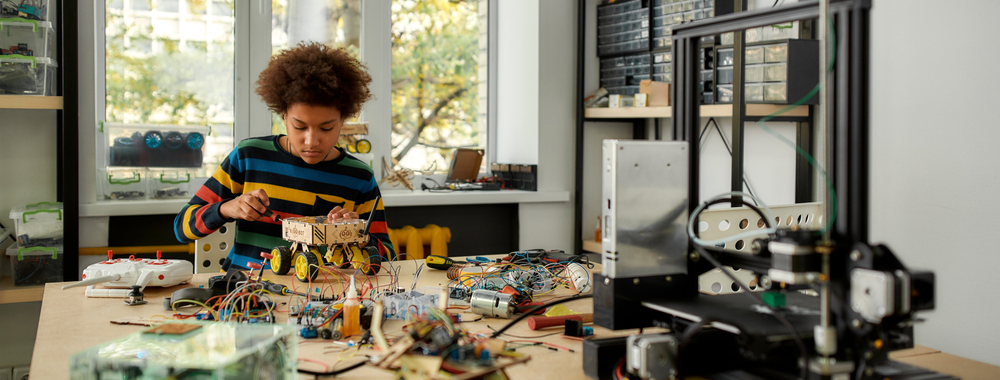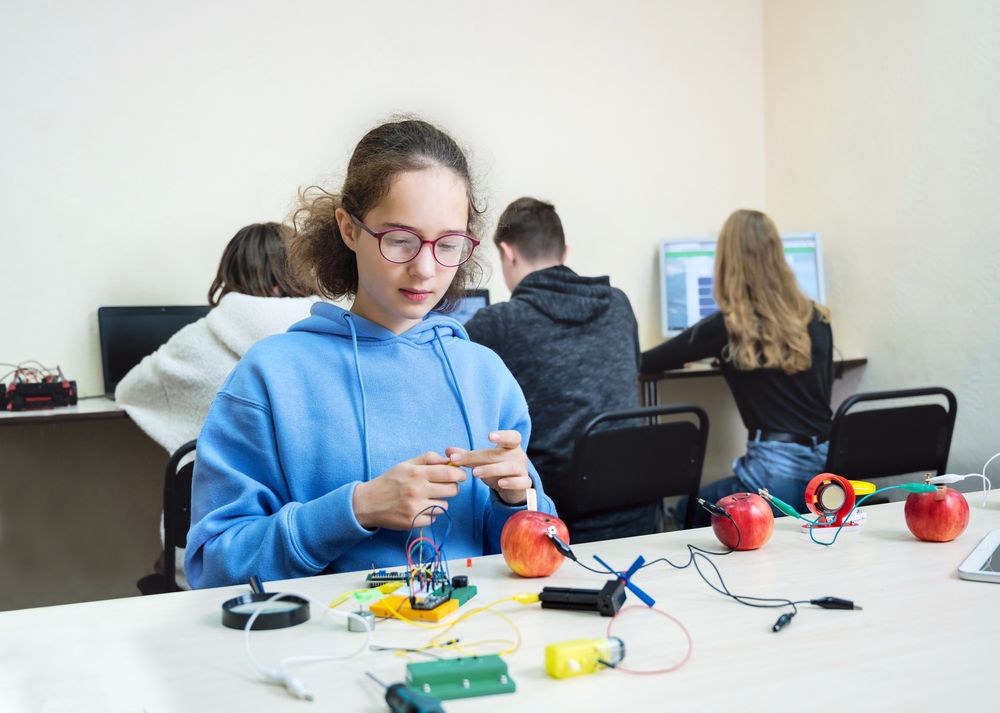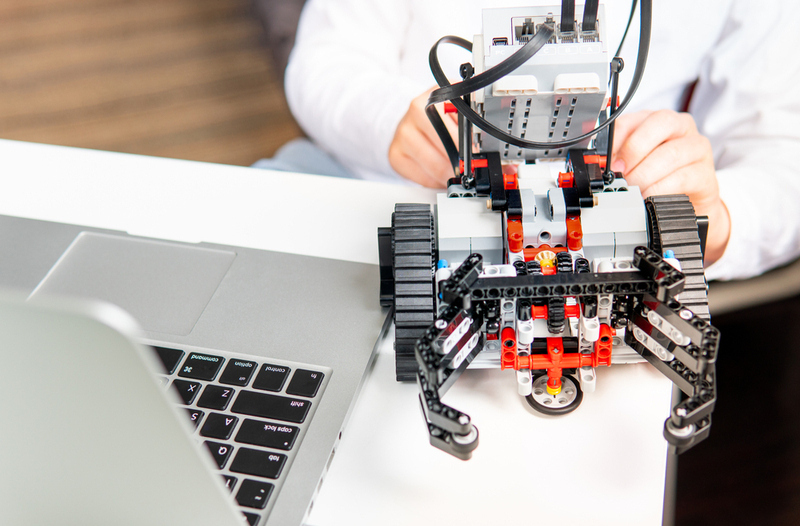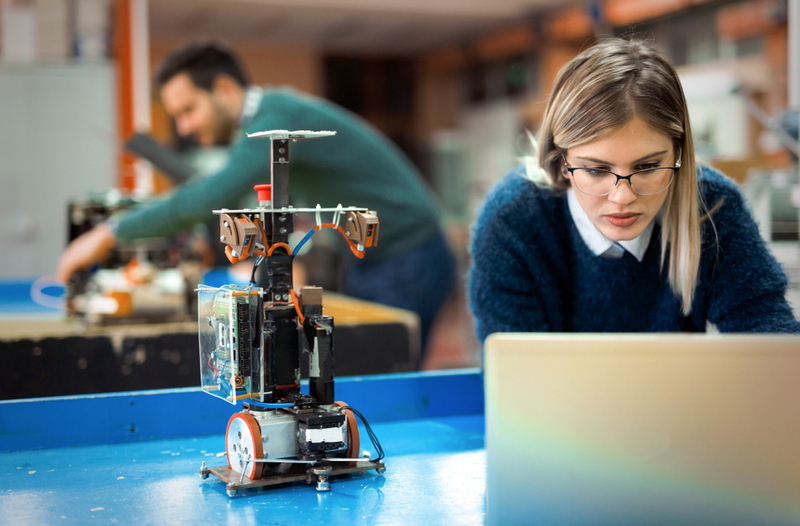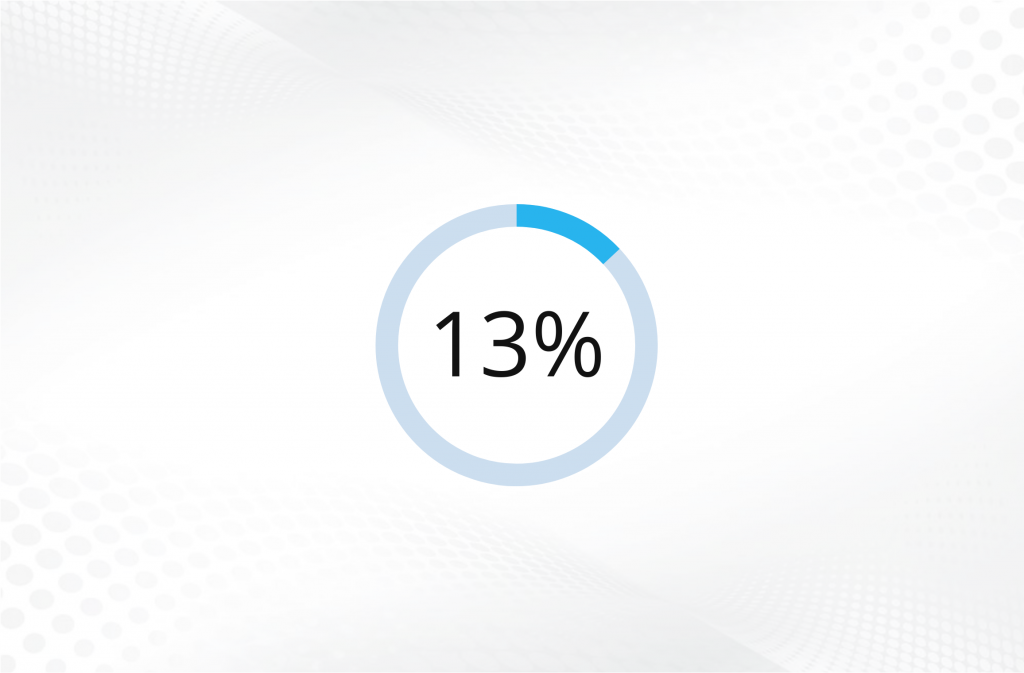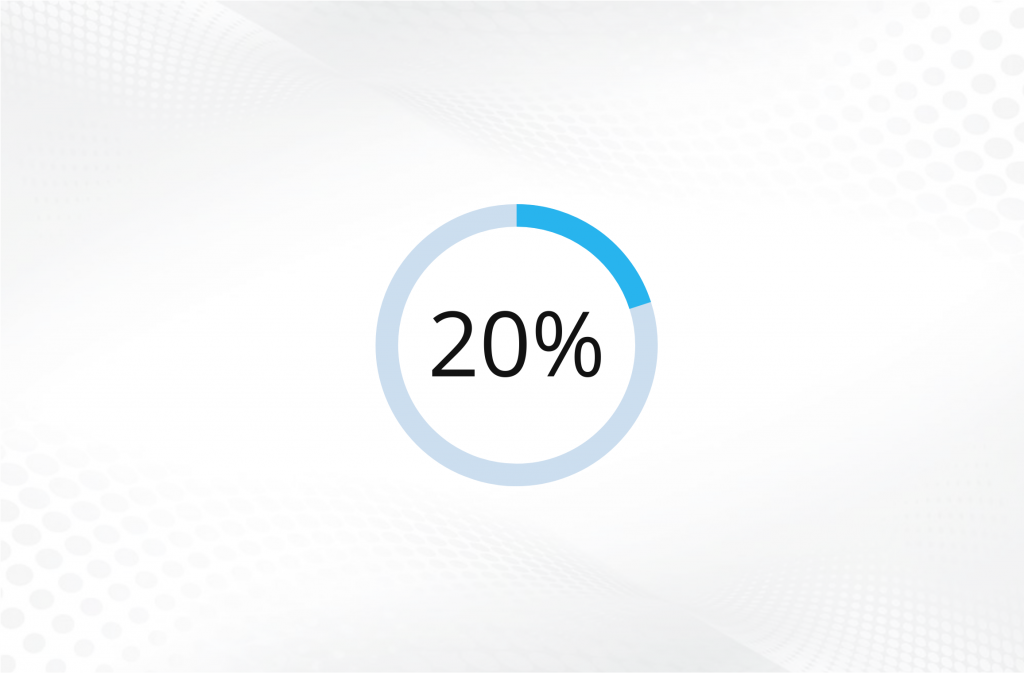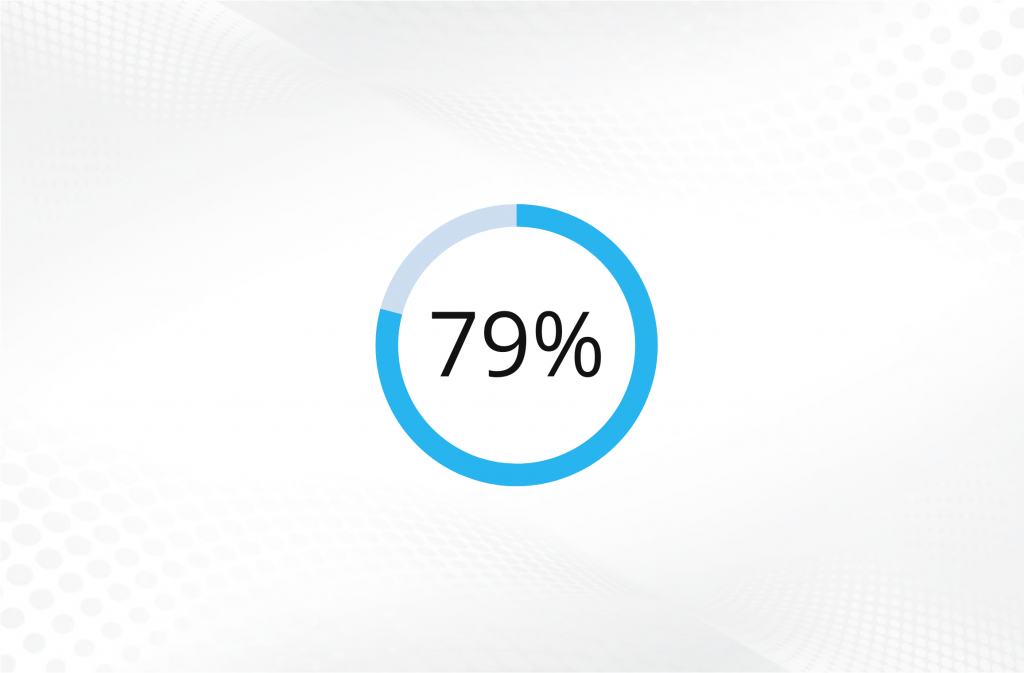STEAM
We are all familiar with STEM, the acronym denoting the subjects of science, technology, engineering, and mathematics. However, some of us are becoming aware of what may be its successor: STEAM. This stands for science, technology, engineering, arts, and mathematics. One could be forgiven for wondering what the big fuss is all about, when all that has happened is the addition of one letter denoting the arts. But there is a lot more to STEAM than that. It is a veritable paradigm shift that is indicative of the future of education – a future that is going to be very different from the educational systems most of us grew up with.
“STEAM represents a paradigm shift from traditional education philosophy, based on standardised test scores, to a modern ideal which focuses on valuing the learning process as much as the results. In essence, we dare our students to be wrong, to try multiple ideas, listen to alternate opinions and create a knowledge base that is applicable to real life as opposed to simply an exam,” says Deron Cameron, the former principal of the United State’s first STEAM certified school.
The new approach to the future of learning that we know as STEAM is an integrative and interdisciplinary approach to learning that blends science, technology, engineering, arts, and mathematics in order to produce an inquisitive and multitalented individual. Critical thinking is a foundational pillar of STEAM. Gone are the days of meaningless work that has little to no bearing on the real world. Educational systems have not evolved as the world has evolved, and STEAM is a means of addressing this shortcoming.
A new type of learner is evolving
The goal is to develop students, and therefore graduates, who are critical thinkers, natural problem solvers, thoughtful risk-takers, collaborators, and creatives. It is a mix of theoretical, content-based knowledge, together with applicable skills, that produces these sorts of individuals. STEAM therefore aims to equip its students for the real-world tasks and problems they are going to face by turning them into creative, critical, and skilled problem solvers.
Naturally, it is exceedingly difficult to produce an individual who is equally capable as a scientist, technician, engineer, artist, and mathematician. Rather, STEAM generally means the integration of two, or sometimes more, of its subsets as the major areas of study, and how they both relate to and complement each other. Not only are two (or more) subsets taught, but they are also taught through and in light of each other. For example, a STEAM student focusing on maths and art would need to understand the overlaps and implications that connect their two chosen areas of study. How can mathematics be utilised in the arts? How can the arts inform the goals of mathematics? How can these two be brought together for practical purposes that are beneficial? Just being able to answer the above questions convincingly would be a sign of a critical and creative individual.
Equipping students for the needs of the future
This is all based on the fact that many traditional educational approaches are not fit for purpose when we consider the sorts of jobs the future is going to demand. The rise of automation and artificial intelligence (AI) are slowly removing menial roles from the jobs market and putting them in robotic hands. The true virtues of a human being are creativity and critical thinking, which is why there needs to be greater emphasis on these in future. It is these virtues that link the five aspects of STEAM. This is part of the reason behind the progression from STEM to STEAM, as the arts are an area that are uniquely human and demand creativity. This can include liberal and fine arts, design, music, and more besides. The interdisciplinary nature of STEAM also demands a lot more practical and hands-on learning than previous generations might have been accustomed to prior to the workplace. The dividing line that bridges theoretical understanding and practical application is one that STEAM is designed to bridge.
Bringing innovative learning methods together
One of the new ways of learning that STEAM embraces is gamification, which is when learning experiences are designed like games with a task and reward system. This ensures greater engagement, knowledge retention, and application of acquired skills. This can go a long way towards creating people who are both motivated and competent.
Essentially, STEM left one important thing out: the arts. And once the arts have been integrated into a comprehensive learning methodology, it opens up a whole new array of opportunities. Learning is not (or at least should not be) only about acquiring information, but learning applicable skills and developing these through a process-based learning system.
“Research has shown the importance of the arts in appealing to a broader and diverse group of learners, and STEAM promotes organic problem-solving of real and complex problems,” explains Dr Kristin Cook, the associate dean of the Annsley Frazier Thornton School of Education at Bellarmine University. “Young learners may have not yet decided what path they want to follow, and it teaches them critical thinking across interdisciplinary boundaries.”
Although it could be said that STEAM is an area of concern only for education and educational professionals, this would be to ignore the larger picture. Education is just the first place at which action needs to be taken in order to make the pivot towards a STEAM-based methodology. STEAM involves the future of the jobs market, which is itself merely an indicator of the major areas that will require concerted human effort in the future. STEAM is a symptom of the rapidly changing nature of the world economy, where human workers will need to embrace those characteristics that are uniquely human in order to make any meaningful contribution.
Addressing global skill shortages
The needs of the 21st century, and indeed beyond it, are not going to be the same as preceding periods of human history. We are rapidly entering a truly digital age, and educational methodologies are trying to find ways of catching up and offering learning that is relevant to this change. STEAM is the current iteration of this. The five subsets that make up STEAM are the skills that are both going to be in high demand in the near future, and which are already in high demand due to a lamentable shortage thereof. It could be argued that educational systems the world over have, for too long, produced too little innovative thinking, genuine artistry, practical learning, and interdisciplinary learning. The latter is often more common at the university level, at which point it could be too late. Young people, especially in their late teens, may still be unaware of what they want to do. This is the perfect time to give them an interdisciplinary education – giving them a wide array of skills and knowledge which they can then apply once they have settled on a path.
Instead, it is often the other way around. At school, students are often taught segmented and separated subjects: English, maths, geography, biology, and so on. They are then expected, usually before the age of 20, to make a final decision on what they want to study and become. We all know of individuals who spent years studying engineering, journalism, economics, or some other thing and then concluded, after graduating, that this wasn’t for them. STEAM aims to turn this around, by giving students a set of skills and knowledge that can be brought to bear in a large array of areas and industries, and with which they can accomplish a lot once they have settled on a suitable role and specialise over time.
Acknowledging that jobs are interdisciplinary
One could take the example of an architect. Out of the five subsets of STEAM, they will be regularly employing the arts, maths, and engineering. True, an architect is not an engineer, but they must have a practical awareness and understanding of engineering, or else risk designing things that are unworkable. Their mathematical skillset may be more geared towards geometry and similar. An architect may not be able to paint a landscape. And, in the modern world, an understanding of technology, especially when it integrates with smart homes, will serve them well. Therefore, the architect is drawing upon a wide array of skills from varying areas of inquiry to produce a service that is unique. More to the point, these various skills are not separated in the architect’s mind.
There will always be a need for architects, making it a job not only of the past, but of the future. The reason it is such an enduring role is because it utilises skills that are fundamentally human and not easily automated. But why should a student wait until they are at university to start learning and acquiring the interdisciplinary set of skills that architects need? Nor are architects unique in this regard, but rather an example among dozens, if not hundreds.
Making students into natural problem-solvers
Everyone who has had the benefit of a full school education has had science classes. This could be anything from the absolute basics taught at the primary level, all the way to advanced physics and biochemistry. While this has provided students with a solid grounding in scientific facts, along with some techniques, there is still something that is often lacking. What is missing is the ability to leverage this acquired knowledge for the sake of interdisciplinary, creative problem-solving. Creative problem solving is an art form, but too often this tends to be evident due to parenting or other personal considerations, rather than a solid educational background therein.
Research into this idea has brought about some interesting, yet unsurprising, results. Students who were active participants in programmes that required creativity were found to develop more advanced thinking patterns, have a better sense of self-awareness, cope better with stress, and be more adept at forming relationships and connections with others for collaborative work.
Putting skills under the spotlight
Some years ago, when the idea of STEAM was just starting to catch on, Naveen Jain, the World Innovation Institute’s founder, wrote something quite prescient. “The traditional system of standardised, rote learning that teaches to a test is exactly the type of education our children don’t need in this world that is plagued by systemic, pervasive and confounding global challenges,” Jain said. “Today’s education system does not focus enough on teaching children to solve real-world problems and is not interdisciplinary, nor collaborative enough in its approach.”
This is mirrored by the National Education Association (NEA), which is the United States’ largest white-collar labour union. According to the NEA, the indicators of professional success in the 21st century revolve around the possession and acquisition of four skill areas: problem solving and critical thinking; communication; collaboration; and creativity and innovation. These are also the primary pillars of integrative STEAM education.
The benefits of a STEAM-based education are already being appreciated in many different places. Turning back the Bellarmine University in the United States, its department of education offers a STEAM Education Teacher Leader degree, which is designed to give “a solid foundation for experienced teachers to discern the most appropriate approaches for integrating arts with science and mathematics, infusing relevant and meaningful technology into instruction while adapting to the unique needs of students and communities.” This Master of Arts in Education (MAEd) is, as noted above, designed for people who are already teaching professionals but who want to adopt and implement STEAM methodologies in secondary schools and elsewhere. “The STEAM specialisation in particular will empower you to deepen students’ interests in science and mathematics as they forge their skills in integrated thinking and problem solving—whatever their age,” says Dr Cook, who is a co-designer of said programme.
STEAM is being increasingly adopted around the world
As noted above, STEAM is an extension of the existing STEM designation, with an inclusion of the arts coupled with a methodology that revolves around process-based learning in pursuit of creative problem solving skills. A lot of this is driven by a need to inject more art and design into STEM fields, but the opposite can also be true.
In the United States, the Denver Public School District (DPS) has announced plans to open a new secondary school at the Montbello Career and Technical campus with a strong STEAM focus. “Our goal is to nurture that next generation of Black leaders with a deep understanding of self, reverence for a powerful past and hope for the possibilities the future holds,” says Shakira Abney-Wisdom, the school leader. “It is also designed to elevate our Black students’ culture history and impact to better support the development of rising scholars and contributors.” Abney-Wisdom, who holds a PhD in education, believes that such an opportunity may be life-changing for students.”I can’t imagine how I would enter and engage with the world had I had that kind of community structure and support from an institutional level as a high school learner. So I’m imagining and believing that it will impact the rich assets that are already existing in the Montbello community,” she explains.
Across the Atlantic Ocean, in Spain, STEAM is also being presented as a methodology that implies high standards. The Best Schools in Spain, which outlines the country’s top-tier private schools, notes these educational institutions’ usage of recognised teaching programmes. In addition to more well-known and internationally respected programmes like the International Baccalaureate (IB) and British Curriculum (A Levels and GCSE/IGCSE), the website notes that the best schools in Spain also employ STEAM educational principles and methodologies. “Students at these schools are seen as a whole, taking all aspects of their being into account including physical, emotional and spiritual elements,” reads the Best Schools in Spain website.
STEAM education suffers from the same problems that a lot of nascent developments do. Chief among these is that, due to its lack of widespread adoption and knowledge thereof, there are insufficient resources dedicated to it. Indeed, it can be hard enough to fund research into the application, and teaching, of new technologies, without also having to find funding to integrate these into a new and innovative system of learning.
Letting go of the past
Another one of the problems that STEAM education faces is rooted in its greatest strength. We have become so accustomed to the idea of education culminating in an exam, or some such assessment, with an accompanying grade or score, that educational professionals can struggle to make the shift. STEAM does promise to bring about individuals who are of much higher calibre than traditional education would have managed, and this requires a lot more effort from teachers. Educators cannot simply relay information, because STEAM requires them to impart certain transcendent skills, like critical thinking, creative problem solving, and others already mentioned. The prospect of having to attend courses or further educational programmes can be either daunting or simply impractical for teachers. It is an oft-heard observation that too little time and money are spent on education. The need for STEAM education could mean that any previous estimates about how much more investment is needed in education were underestimations. As this fact begins to dawn upon us, we may see a lot more money being invested in education, in order to bring it up to scratch with the needs of the future.
Old dogs, new tricks
Another facet of the problem is that teachers themselves, in addition to being accustomed to grading students based on certain performances, are also in the mindset of teaching subjects separately. A science teacher may be reluctant to accept the virtues, and possibilities, of incorporating the arts into their teaching. The opposite may be true of the arts teacher who cannot fathom how physics could have a place in their art classes.
This relates to another priority of STEAM education, which is collaborative effort. If the art and science teacher cannot come to terms with overlapping their respective syllabi, students are going to remain under the impression that their choice must be either one or the other. Integrated, interdisciplinary teaching must start with the teachers before being imparted to students. This may be more of an obstacle with experienced teachers who have become set in their ways, and novice and aspiring teachers may be the initial adopters of STEAM approaches as a result.
Significant opportunities remain
Despite the hurdles to be overcome, STEAM education still promises to be a revolutionary transformation that is unmatched since education ceased to be the privilege of a lucky few. Many of us will remember our school days as days of boredom, with a clock mounted on the classroom wall that almost appeared to slow down every time we looked at it. We were seldom engaged and went into university clueless. Some may have entered the job market clueless, and been left wondering what the point of a university education was if they needed job training anyway. We may have felt a pang of guilt when we remembered skipping classes to play games, and wonder if that was what held us back.
STEAM education is based on the premise that the opposite is true. The problem is not that we did not focus enough, it was that our games were (mostly) un-educational and our education was not engaging the way games are. Children are naturally geared to play games because they need to engage with the world around them, and this experimental approach to life lies at the heart of STEAM education, which seeks to couple this with the skills and knowledge needed to drive the future. Integrated, interdisciplinary learning that encompasses the sciences, technology, engineering, the arts, and mathematics, and seeks to impart know-how and practical skills, not merely the ability to score well on a test, is increasingly looking like the future. As more people come to the same realisation, the investment in this innovative approach to learning is going to increase tenfold.
